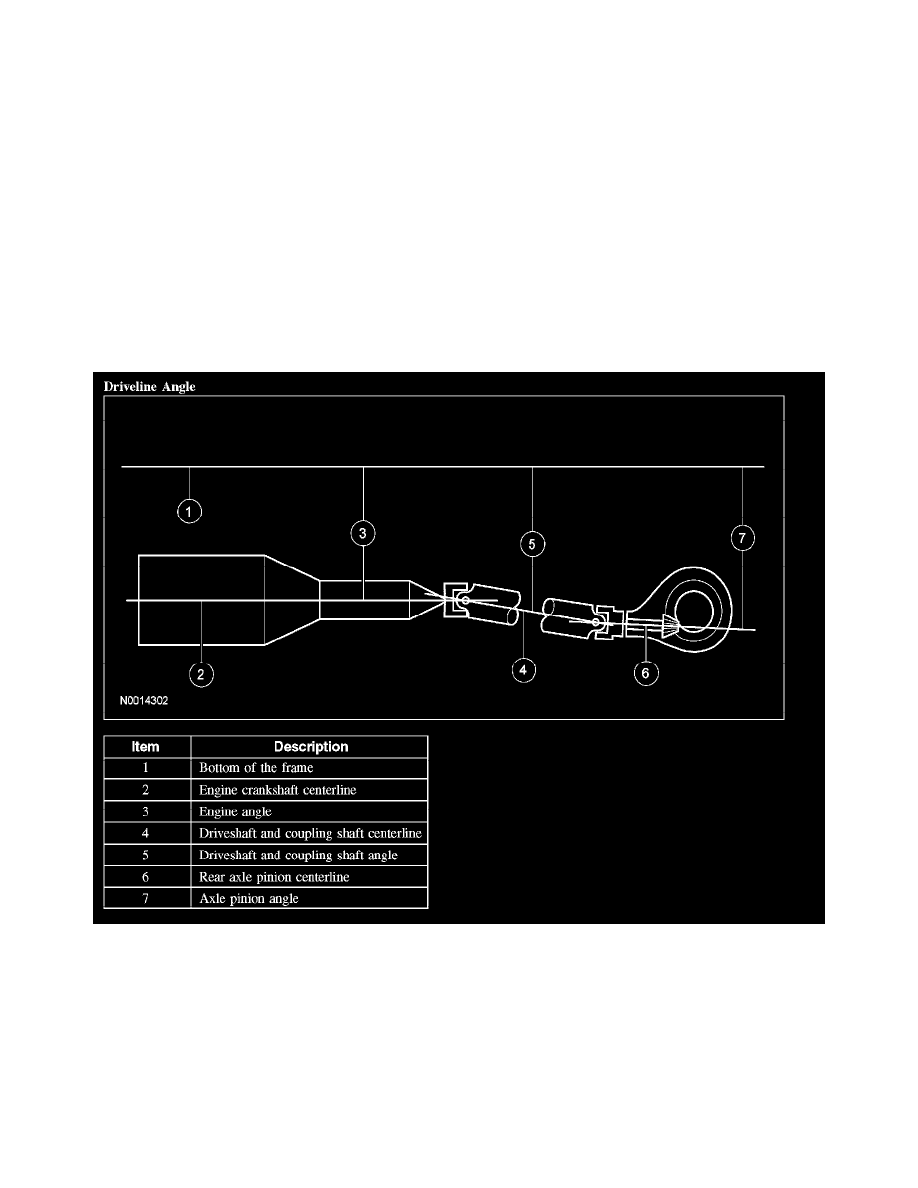Mountaineer 2WD V6-4.0L VIN K (2007)

Few vibration conditions are caused by the front or rear axle. For a vibration concern, follow the diagnosis procedure in Vehicle/Testing and
Inspection unless there is a good reason to suspect the axle.
Tires
WARNING: Do not balance the wheels and tires while they are mounted on the vehicle. Possible tire disintegration or differential failure
could result, causing personal injury or extensive component damage. Use an off-vehicle wheel and tire balancer only.
Most vibration is caused by tires, driveline angle or driveline imbalance.
Vibration is a concern with modern, high-mileage tires if they are not "true" both radially and laterally. They are more susceptible to vibration around
the limits of radial and lateral runout of the tire and wheel assembly. They also require more accurate balancing. Wheel and tire runout checks, truing
and balancing are normally done before axle inspection.
Driveline Imbalance
Driveline imbalance can be caused by excessive looseness in the driveshaft, damaged driveshaft tubing, looseness or high runout at the driveshaft
attachments (axle and transfer case flanges). Excessive looseness in the driveshaft can be caused by CV joint or universal joint wear, as well as loose
fitting slip-yoke splines. Inspect and install new driveshaft components as necessary.
Driveline Angle
Driveline Angle
Driveline angularity is the angular relationship between the engine crankshaft, the driveshaft and the rear axle pinion. Some of the factors determining
driveline angularity include ride height, rear spring and engine mounts.
An incorrect driveline (pinion) angle can often be detected by examining the driving condition in which the vibration occurs.
^
A vibration during coastdown, from 72 to 56 km/h (45 to 35 mph), is often caused by an excessive U-joint angle at the axle (pinion nose
downward).
^
A vibration during acceleration, from 56 to 72 km/h (35 to 45 mph), may indicate an excessive U-joint angle at the axle (pinion nose upward).
When these conditions exist, check the driveline angles.
